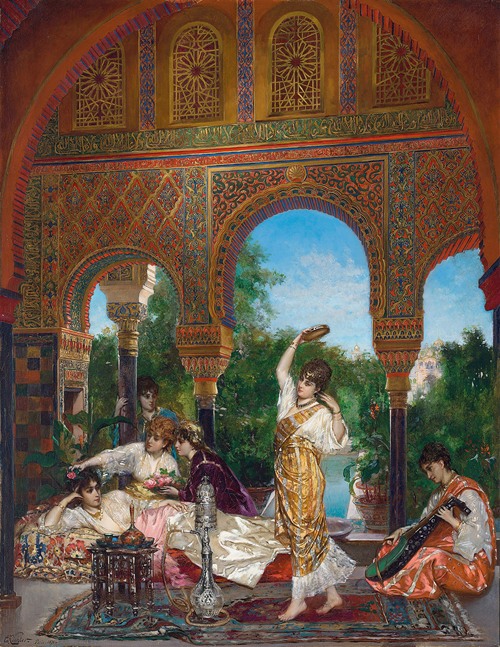
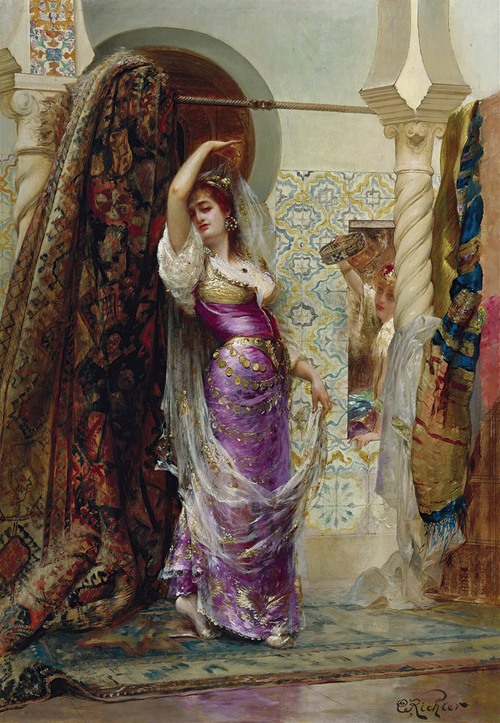
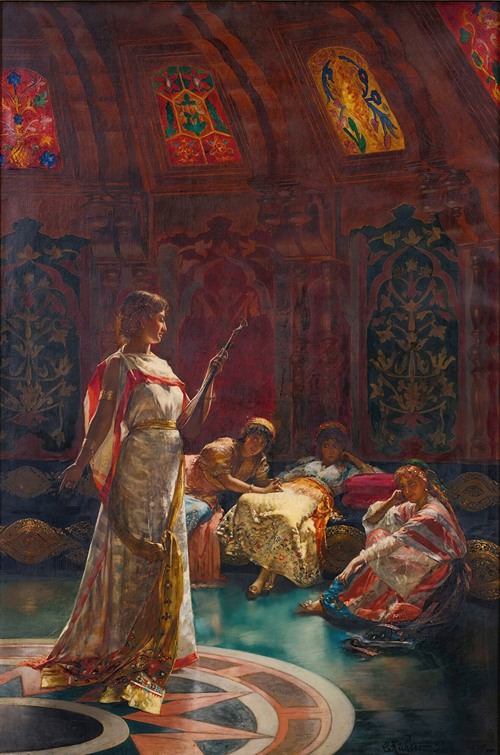
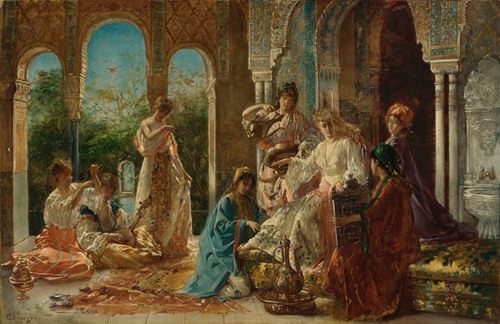
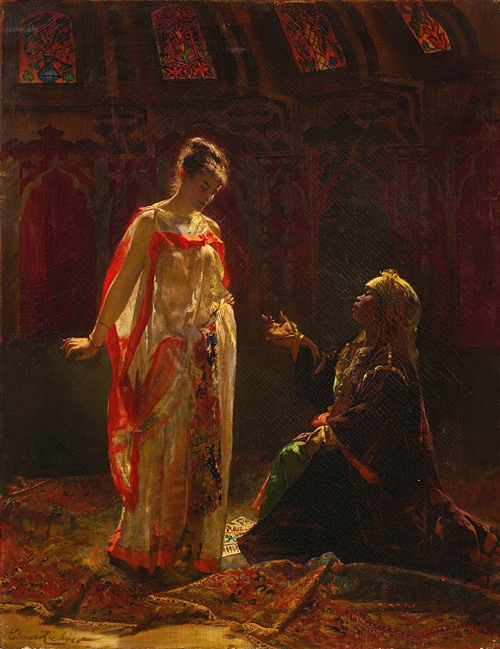
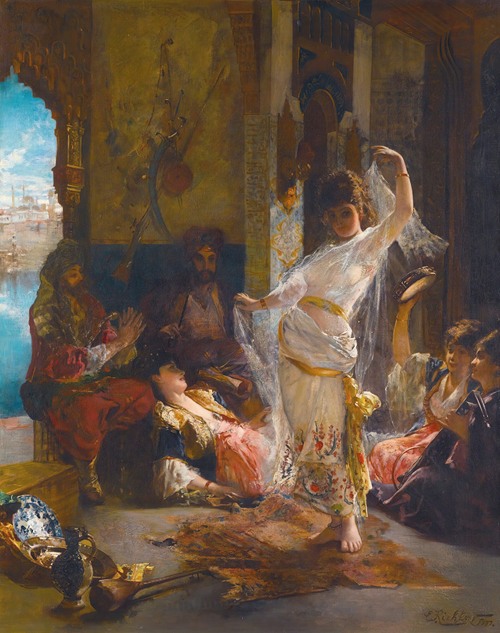
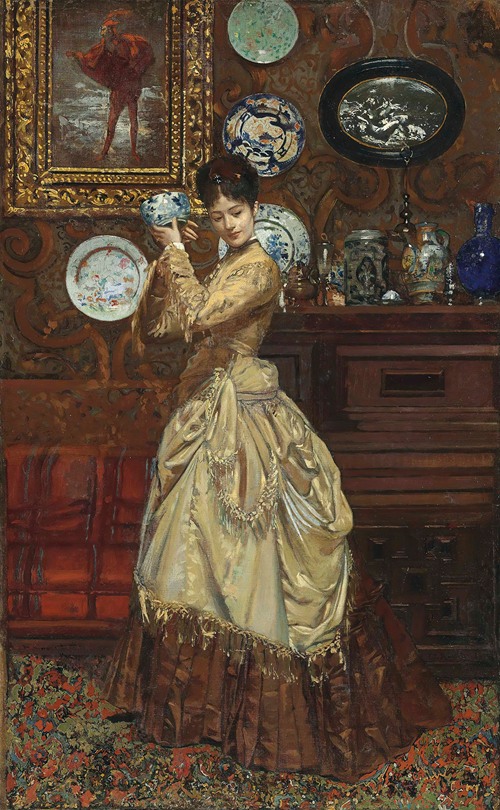
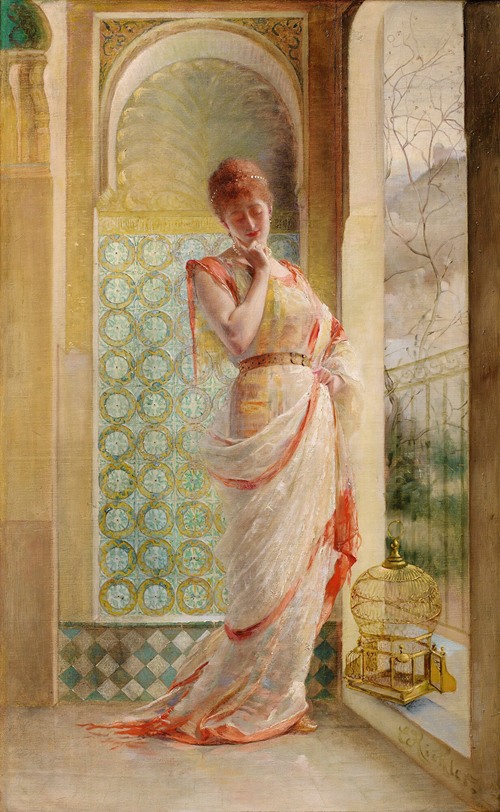
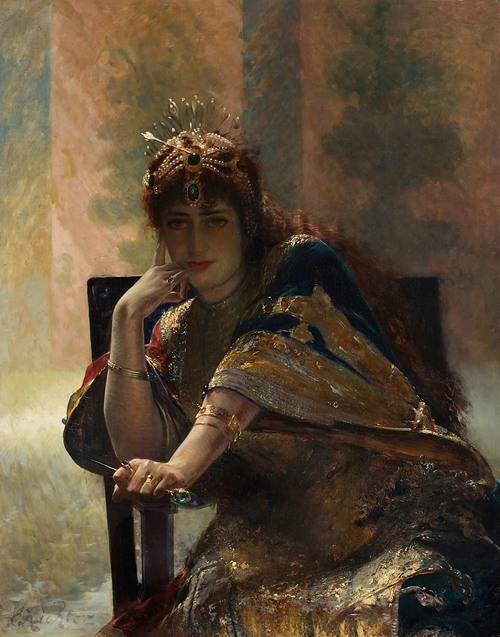
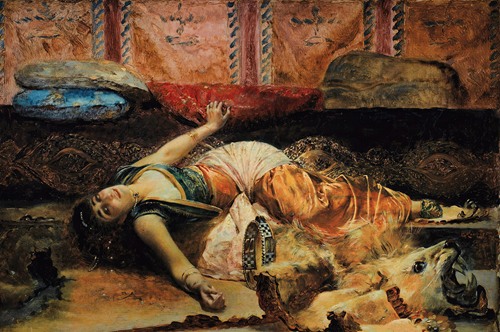
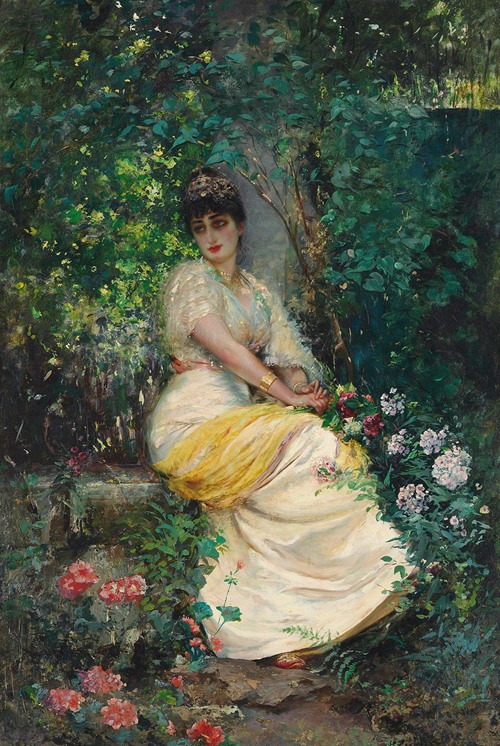
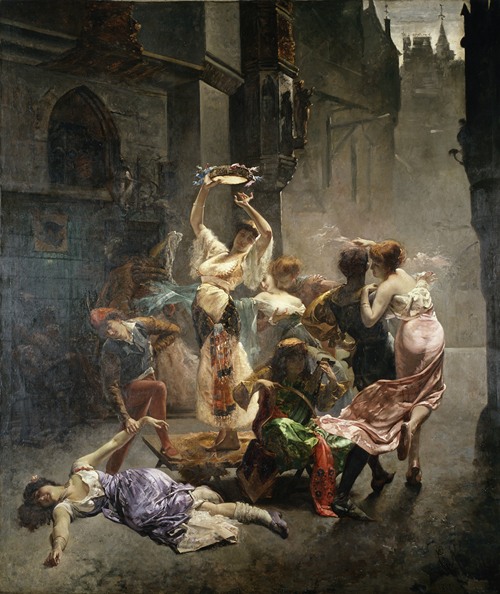
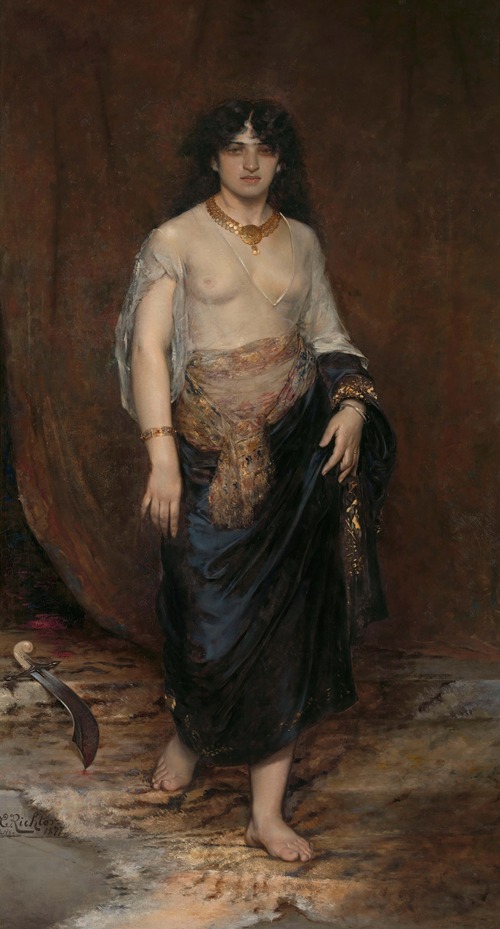
Édouard Frédéric Wilhelm Richter was a French painter who specialized in genre and Orientalist scenes.
His father was German and his mother was Dutch. He began his artistic studies at the Royal Academy of Art, The Hague, followed by studies at the Académie des Beaux-Arts in Paris with Ernest Hébert and Léon Bonnat.
After completing his studies, he remained in Paris. His first exhibition took place in 1866.
In addition to his popular Orientalist paintings, he produced numerous portraits. Some of his works may be seen at the Musée Baron-Martin [fr].












